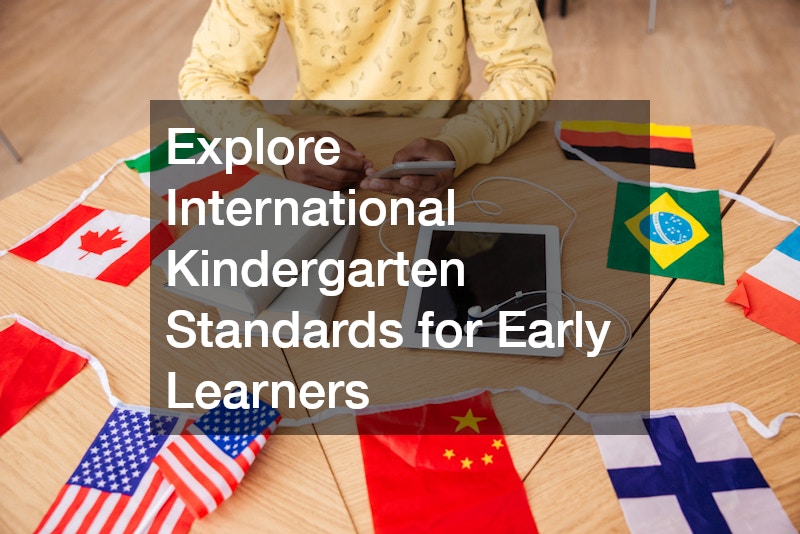Early Education Guide: Infant Care Through Preschool
This guide offers an end-to-end framework for evaluating every major early-education stage. You will understand what to look for, what questions to ask, how to assess school environments, and—most importantly—how to decide what is best for your child at each step. Whether you are preparing for your first childcare experience or mapping the path toward elementary and middle school, this comprehensive resource is designed to help you make confident, informed decisions.
Understand What Quality Care Looks Like in the First Year

The first year of life is foundational. Infants develop trust, sensory connections, emerging communication skills, and the earliest building blocks of their personalities. When choosing infant day care, parents should focus not on fancy equipment or elaborate photos, but on emotional quality, safety, and developmental alignment.
Look for responsive caregiving
Responsive care is the hallmark of a strong infant environment. Caregivers should:
-
Make eye contact and respond to babies’ attempts to communicate
-
Narrate routines such as feeding and diapering
-
Hold babies during bottle feedings
-
Follow individual nap and feeding schedules
These behaviors tell you that the caregiver is aligned with your child’s developmental and emotional needs.
Evaluate safety and consistency
A high-quality setting maintains:
-
Low caregiver-to-child ratios
-
Secure sleep setups with proper crib spacing
-
Meticulous attention to hygiene and handwashing
-
Clear procedures for illness reporting
Observe whether caregivers remain calm, patient, and predictable. Infants thrive in environments where adults manage transitions smoothly.
Confirm meaningful communication
Centers should keep daily logs of naps, bottles, diapers, mood, and milestones. Ask how they communicate—through apps, text updates, or end-of-day summaries. You should feel included, informed, and respected.
Prepare for Smooth Transitions Into Structured Learning
When moving from unstructured infant and toddler experiences into preschool, children need gradual preparation. Rather than focusing solely on academic readiness, parents should support the development of independence, social awareness, and emotional regulation.
Build readiness skills at home
A few months before starting, gently reinforce:
-
Following simple directions
-
Playing independently
-
Listening during read-alouds
-
Cleaning up toys
-
Practicing self-help tasks like putting on shoes
These activities help children integrate into a preschool environment with confidence.
Evaluate classroom dynamics during tours
Observe:
-
Whether teachers kneel at children’s level
-
How conflicts between children are resolved
-
Whether learning happens through play
-
How materials are arranged in the room
A strong preschool environment should feel warm, curious, and orderly—not overly rigid or chaotic.
Ask about emotional learning
Preschool isn’t only about basic literacy and numeracy. Programs should integrate:
-
Feeling charts
-
Circle-time discussions
-
Conflict-resolution modeling
-
Turn-taking routines
These skills directly support smoother peer interactions.
Choose a Preschool Program That Matches Your Family’s Learning Priorities
Not all early-education philosophies are the same, and choosing the right preschool program requires comparing approaches and determining what aligns with your values and your child’s personality.
Compare teaching philosophies
Families should understand the differences among:
-
Montessori: independence, self-direction, mixed-age classrooms
-
Reggio Emilia: creativity, project-based learning
-
Traditional academic: structured lessons and early introduction to literacy
-
Play-based: exploration-driven learning with guided teacher interaction
Observe how progress is measured
A strong program should:
-
Conduct periodic developmental assessments
-
Share work samples with parents
-
Hold scheduled conferences
-
Offer transparency into behavioral or learning concerns
Consider logistical fit
Factors such as schedule, classroom size, teaching credentials, proximity to home, and communication style all make a difference in your long-term satisfaction with the program.
Support a Confident Start to Kindergarten

The transition to kindergarten is often the first time children encounter formal academic expectations. Parents play a major role in shaping a child’s readiness and confidence.
Strengthen foundational skills
Focus on:
-
Identifying letters and sounds
-
Counting and comparing quantities
-
Practicing pencil grip
-
Developing emotional regulation
-
Encouraging independence in routines like lining up or packing a backpack
Establish consistent daily rhythms
Children entering kindergarten benefit immensely from predictable routines. Set consistent wake-up times, bedtime routines, and mealtime schedules. Predictability helps reduce anxiety during the first weeks of school.
Partner closely with teachers
During the first month:
-
Ask how your child is adjusting socially
-
Request examples of work samples to monitor progress
-
Stay aligned on behavior expectations
-
Attend orientation and back-to-school events
Evaluate Elementary School Options That Promote Long-Term Success
Review curriculum quality and balance
Look for strong programs in:
-
Literacy (phonics, comprehension strategies, writing instruction)
-
Math (conceptual understanding and problem solving)
-
Science and social studies
-
Art, music, and physical education
Understand intervention and support systems
A strong school will offer:
-
Reading specialists
-
Differentiated instructional groups
-
Small-group intervention blocks
-
Clear behavioral frameworks and communication systems
Watch for red flags
These may include:
-
Large class sizes without support staff
-
Limited enrichment offerings
-
Minimal communication about student progress
Know When a Private School May Offer Additional Benefits
Families sometimes consider private schools when they want smaller classes, specialized programs, or a values-driven approach to education.
Assess class size and individual attention
Private settings often maintain lower student-to-teacher ratios, allowing more personalization. Look for environments that balance:
-
Academic rigor
-
Emotional support
-
Consistent teacher-student connection
Review culture and values
Parents should examine:
-
How schools speak about character and citizenship
-
Whether diversity and inclusion are prioritized
-
How schools involve families in community life
Explore specialized offerings
Private institutions may offer:
-
Stronger arts programs
-
Advanced STEM pathways
-
Language immersion
-
Enriched extracurricular options
Decide Whether a Private Middle School Is the Right Next Step

The transition to early adolescence is complex. Choosing a private middle school may provide structure, guidance, and challenge during this developmental phase.
Evaluate academic challenge
A strong program will:
-
Introduce advanced writing expectations
-
Offer pre-algebra or algebra
-
Teach study skills and executive functioning
-
Provide hands-on labs and project-based learning
Examine extracurricular depth
Middle school is a time for identity exploration. Look for:
-
Clubs tied to emerging interests
-
Technology, robotics, or coding teams
-
Sports with developmental focus
-
Arts, theater, or music programs
Review counseling and emotional support
Adolescents benefit from advisory programs, mentorship, and guidance counselors who support academic and emotional needs.
Understand the Real Advantages of Non-Public Learning Environments
Parents weighing options often wonder about the concrete benefits of private school education and whether they justify the investment.
Evaluate personalized instruction
Private settings often allow:
-
Deeper teacher knowledge of each student
-
Tailored pacing and challenge levels
-
Regular feedback loops with parents
-
Earlier identification of learning needs
Examine community values and culture
Stronger alignment between family values and school values can reduce confusion for children and reinforce important character lessons. Parents should assess how schools emphasize empathy, inclusion, service, and leadership.
Consider long-term academic outcomes
Many students experience:
-
Higher graduation readiness
-
Stronger writing and study habits
-
More holistic development due to smaller environments
Consider Global Education Options for a Broader Worldview
Review curriculum frameworks
Many schools follow:
-
International Baccalaureate (IB)
-
Cambridge Assessment
-
American or bilingual systems
Each framework creates different learning experiences. The right fit depends on your child’s needs, future mobility, and academic goals.
Examine cultural and language immersion
High-quality international environments often:
-
Offer foreign-language instruction beginning in early grades
-
Hold multicultural events and celebrations
-
Encourage cross-cultural friendships
-
Include global service projects
Assess teacher diversity
A strong international environment often employs educators from various countries, exposing students to multiple teaching styles and accents.
Explore International Kindergarten Standards for Early Learners

Global cities model excellence in early childhood education, and some families look toward regions like Asia to understand what makes top programs successful. For example, an international kindergarten in Singapore often integrates strong academic foundations with play and inquiry.
Look for balanced, developmentally appropriate instruction
High-quality programs incorporate:
-
Phonics and early literacy
-
Numeracy foundations
-
Hands-on exploration
-
Multilingual instruction
-
Leadership and collaboration through play
Observe classroom structure
Parents should examine:
-
Materials that encourage curiosity
-
Space for imaginative and collaborative play
-
Teachers who model problem solving
-
Daily routines that balance structure with creativity
Consider the environment
Many leading global programs emphasize outdoor learning, cultural festivals, and global citizenship themes, helping children explore the world from an early age.
Look for Age-Aligned Continuity Across All School Levels
Continuity is essential for long-term academic and emotional stability. Even if your child does not stay in one school throughout all grades, the principles behind strong private schools and strong elementary schools can guide your decision-making.
Map your child’s long-term educational pathway
Parents should consider:
-
Consistency in teaching philosophy
-
How well the school supports transitions between grades
-
The availability of enrichment year after year
-
Academic expectations that build logically
Evaluate community and culture
Healthy school environments maintain:
-
Strong parent-school communication
-
Respectful peer culture
-
Opportunities for involvement
-
Clear values that guide student behavior
A school with predictable structure and clear expectations helps children move through each developmental stage smoothly.